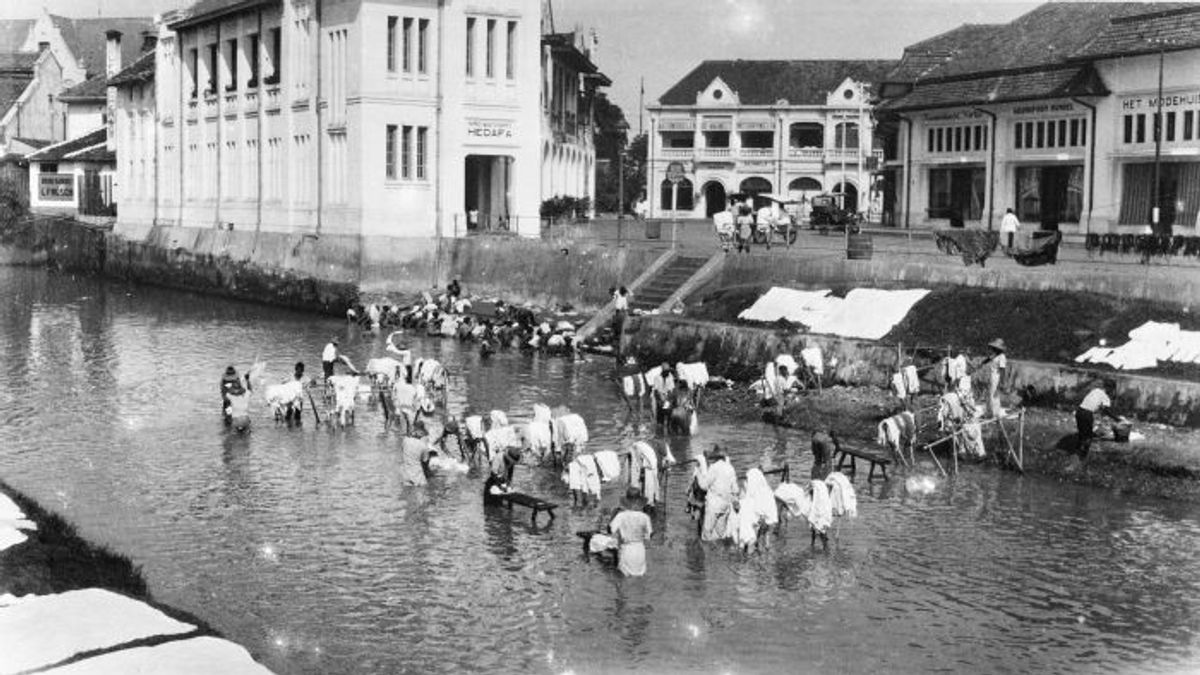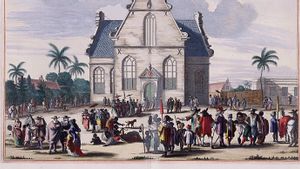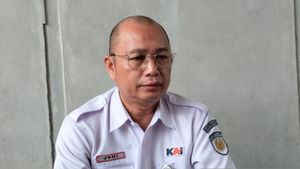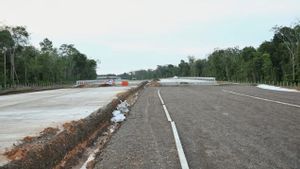
JAKARTA - The Dutch trading company, the VOC dared to guarantee the availability of clean water. This optimism accompanies the early phase of Dutch colonialism in Batavia (now: Jakarta). The Ciliwung River is considered a clean water source.
The water was accommodated in Pancoran. People also came to harvest it. In fact, they were immediately drunk. This condition did not last long. Damage to the environment causes. A clean water crisis occurs in Batavia. Those who are rich can import drinking water. While commoners are forced to drink polluted water.
The establishment of Batavia City is an important milestone in the existence of the VOC. The city was deliberately created by the VOC to support the agenda of the spice trade monopoly in the archipelago. Batavia was also made to resemble cities in the Netherlands. From canals to buildings built.
The life of the Dutch in Batavia was also fun. Their needs were much fulfilled. Mainly regarding clean water. The availability of clean water in the early phase of Dutch colonialism was so abundant. The Dutch only needed to accommodate water in Pancoran (the area around Glodok). After that, people can harvest clean water. In fact, immediately drink.
The clarity of Ciliwung water at that time was not without reason. Batavia at that time was still quiet. There are not many people. Even the area around Batavia is still dominated by the wilderness. The pleasure of living side by side with water resources is shown by most of the houses built by Company employees facing the canal or river. Not facing your back.
However, everything changes when Batavia gets busier. Most Batavia residents are reluctant to protect their environment. Everything because the only thing the Dutch care about is the only advantage.
There are experts who stated in 1648 that Ciliwung water is very good (voortreffelijk). Maybe this is the case as the outskirts of the city, upstream of the river, are still full of forests without residents. When then the opening of forests and cultivating the soil is expanding, and settlements are increasing, the water is increasingly polluted. In 1689 another expert noted that the water coming out of the reservoir in Pancoran was cloudy, even muddy in the rainy season.
About 1685 another expert firmly said that in the water there were fine animals that were invisible to the eyes (onzichtbara beesjes). Subtle animals, of course, are none other than germs, will die if the water is cooked before drinking, as is commonly done by hintoestnners (which is meant by Indians) and other Bumiputras," wrote the book Batavia: Jakarta's Story Tempo Doeloe (1988).
Environmental damage in Batavia was caused by many factors. The behavior of the Dutch who often disposed of garbage and defecated carelessly at the river was one of the reasons. This condition was also exacerbated by the massive land clearing and the construction of many factories.
The practice of life makes rivers polluted. The threat of disease due to consuming water contaminated with bacteria is a frightening scourge. Mainly, smelliness and malaria. Both diseases became the number one killer in Batavia in their time.
The Company has tried to overcome the epidemic many times. However, far from being successful. The habit of drinking river water immediately without being cooked brought disaster to the Dutch. This condition made the residents of Batavia look for their own safety.
Rich Dutch people can import clean water from abroad. In fact, they can move to a place where clean water is guaranteed. Those with the level of soldiers were forced to enjoy the polluted Ciliwung River water until their death came.
This condition is different from what experienced by the bumiputras, China, and India in Batavia. The three of them are actually immune to life in Batavia without being exposed to diseases such as the Dutch. All because of the habit of cooking water before drinking. This condition also made the Dutch people begin to imitate the habit of drinking tea for health such as the Chinese and the natives.
From the symptoms of the disease, we can conclude that the outbreak was malaria, but it cannot be explained why the disease appeared so suddenly or, at least, why the disease spread so widely after 1731 and whether the excavation of the new canal was related to it. Doctors at that time failed to find the cause. They blamed the sea wind, then the ground wind. They imported Spa or Seltzer water from Europe, and didn't drink from the dirty river water, and eventually they even started to think that the existence of the dirty canals themselves was not healthy.
But Indonesians, who do not care about the quality of drinking water, are more immune than Europeans. Chinese are practically free from the disease. Since the Chinese drink a lot of tea, the belief spreads that tea is a drug drink, an opinion that is quickly exploited by directors in Amsterdam. They circulated leaflets among the Dutch people who advised them to drink tea to be healthier, and advised people to drink 40 cups a day, explained Bernard HM Vlekke in the book Nusantara (2008).
The English, Chinese, Japanese, Arabic, and French versions are automatically generated by the AI. So there may still be inaccuracies in translating, please always see Indonesian as our main language. (system supported by DigitalSiber.id)









